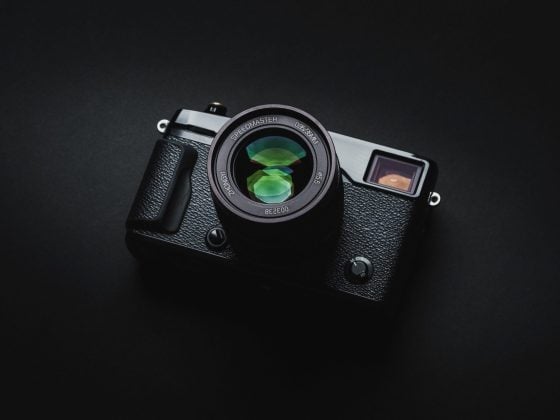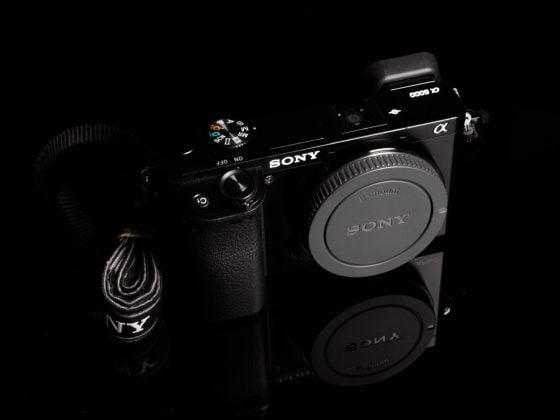Whenever Fujifilm releases a new film simulator for their cameras it’s always an exciting time, for me anyway. It is after all one of the most compelling reasons to use Fujifilm cameras.
This year, Fujifilm has given us a new look called Eterna. Eterna is built for the videographer or cinematographer using Fujifilm cameras that wants a very flat, low saturation look that offers more flexibility for post color work.
Since the Canon 5D II, there has been this huge trend for people using still cameras to shoot video, and while that’s great for the wallet, camera companies have had to gimp the bitrates and codecs to 8-bit mpegs and sometimes 10-bit to keep file sizes and processing down. The work around is to shoot F-log or to keep the camera profiles very flat.
With the new Fujifilm X-H1 and eventually after some firmware for the X-T2, we have the option to do both. F-log and a flat film profile called Eterna. Pretty cool, but as a photographer should you care?
Eterna For Photographers
While Eterna is built with a very flat look, it can still be used effectively for photography. It has a truly unique look and color to it, somewhere between Classic Chrome and ProNeg Std, you just have to blast the contrast.
For those that say, “I shoot RAW, I don’t need these profiles.” Well, you’re missing out. You can still shoot RAW and apply the Fujifilm looks later in Lightroom, or you can even use the in-camera RAW processor to apply different looks to burn as JPEGs for processing with mobile apps such as Darkroom App. A lot of very successful Instagramers are doing this now and I’ve found it very convenient when traveling.
So you can still shoot RAW, then use the in-camera render engine to cook your JPEGs for processing on your iPhone and Android when you’re on the go. I actually do this quite a bit for my Instagram stream and it’s a lot of fun. I even get a lot of people asking me how I get the color so nice in my images. Usually it’s just Classic Chrome.
Using Eterna For Photography
I kept it very simple with these Eterna sample images so that you could get a nice sense of the color and contrast the profile offers. I personally really like it, but it’s a little more difficult to work with than say Classic Chrome or Provia because it’s so flat. It would also seem the low contrast is a little weighted in the shadows, so applying blanket contrast can actually push your midtones down too hard.
You can see the colors are really different with the skin tones compared to Provia. In this sample of my daughter I added +56 contrast on Eterna and -12 contrast on the Provia in Lightroom, the difference isn’t just contrast. The two looks have completely different color curves that ultimately have different levels of contrast within different color spectrums. Colors are a little different especially with skin tones.
To use Eterna efficiently, I’ll probably have to build some unique curves, maybe within each color channel to properly add contrast without crushing out some of the skin tones, which is what seems to happen when just applying blanket contrast. Possibly all it needs is a tuned S-Curve that adds more contrast in just the shadows.
Fujifilm Eterna Samples
I found the green grass a too little neon when using Eterna for my taste, so I pushed it a little bit towards blues with the Hue slider in Lightroom. It’s still a pleasant green, not a super neon green like I get with my Sony cameras which is a more yellow green neon, but I just personally like greens being more blue. Other than that, all these photos mostly just have basic tonal adjustments and curves.
While these photos are mostly shot out in a sunny park, there are a few shots that have more earthy tones to them, and it’s with that color palette that Eterna really shines.
I’m really looking forward to Eterna coming to the X-T2 for use in street photography because I won’t be buying an X-H1 even though the X-H1 is easily the best camera I’ve ever tested – I just own too many cameras already.
I recommend you rent, or borrow and X-H1, looking at in online doesn’t do it justice. It’s such a cool camera. It’s IBIS blows my Sony A7rIII IBIS out of the water. Sony shouldn’t be allowed to even call what they have IBIS, it’s more like vibration reduction.
P.S. The Fujinon 90mm Is Awesome!
It would be a sin for me to post all these photos taken with the Fujinon 90mm without giving it a little attention. Of all the prime Fujifilm lenses I own, (and I own most of them), this is probably their best lens. I only say probably because I haven’t shot with the 80mm yet. Bokeh is amazing, it focuses incredibly fast, and it’s colors are so rich. I feel like I’m cheating every time I use this lens.
And for all you Sony A7 III fanboys, you will never match the pure beauty, elegance and aesthetics you get from the Fujifilm X-H1 and the Fujinon 90mm with a similar priced setup using the Sony A7 III. Not gonna happen. Yes, the Sony A7 III is incredible, but a camera is more than its sensor and a few buttons. Cameras require lenses and while Sony has a lot of nice overpriced Zeiss lenses made by Tamron, the system as a whole is a lot like Lance Armstrong. You can get some great performance out of it with a juiced up body, but it will always be missing a nut. 🙂
Sorry Lance! I still love you!
I shifted the greens a little blue in a few of these shots.
Samples with the Mitakon 35mm f0.95
The first two shots here have some blue shift on the greens. The Dandelion shot has it’s colors untouched.
| **This website contains affiliate links. We will earn a small commission on purchases made through these links. Some of the links used in these articles will direct you to Amazon. As an Amazon Associate, I earn from qualifying purchases. |
























